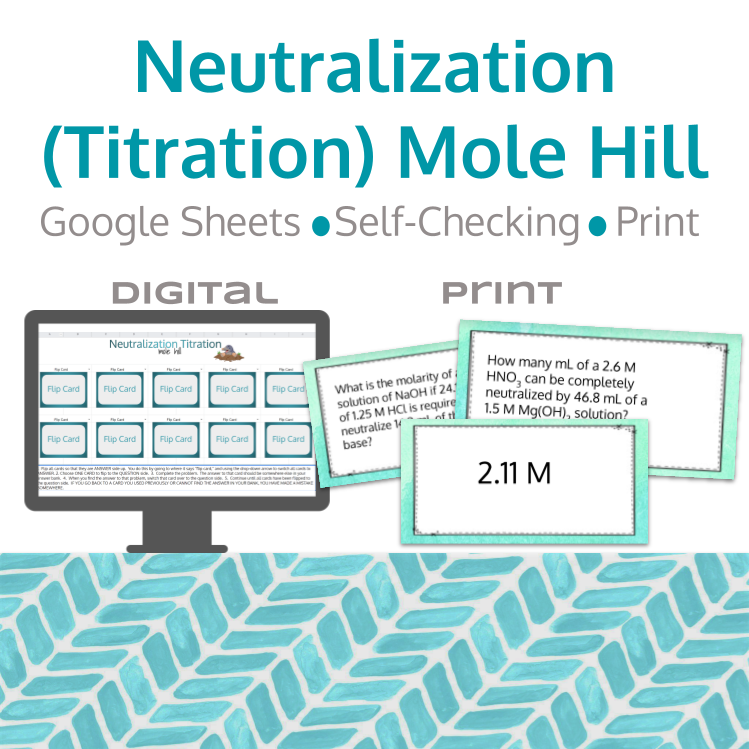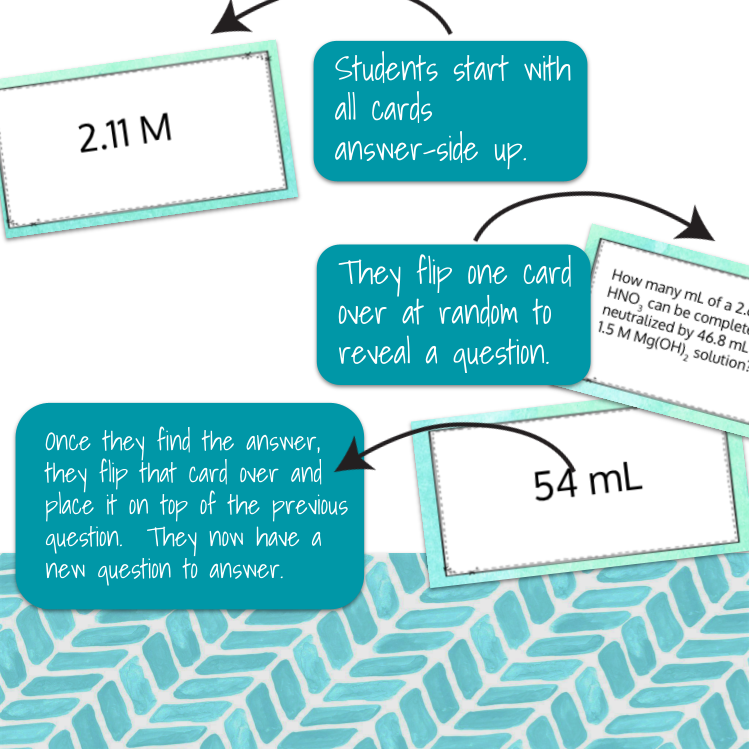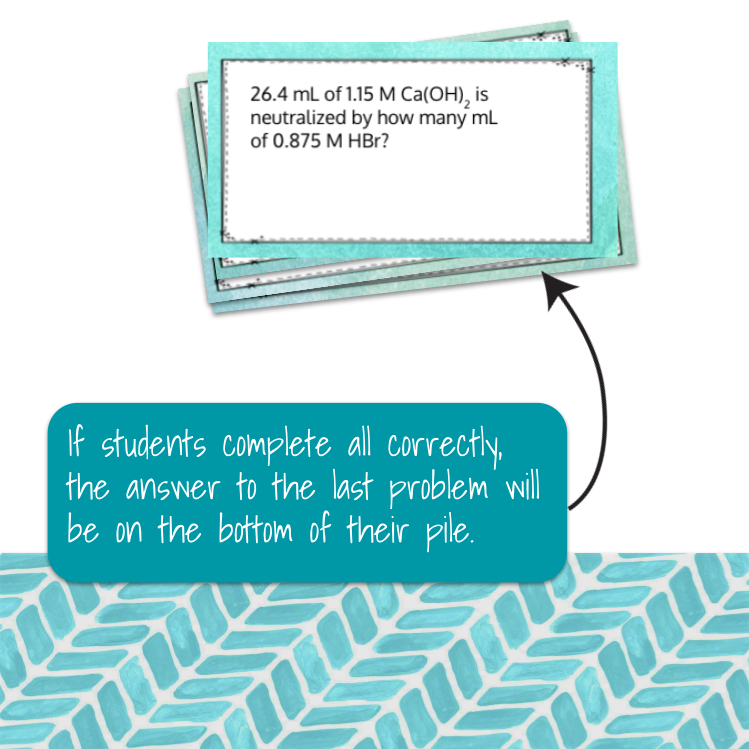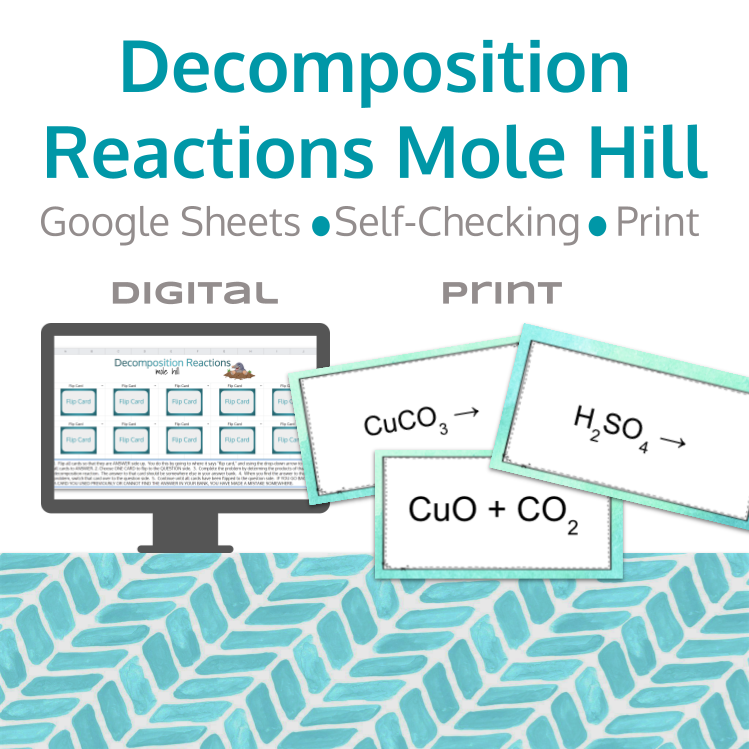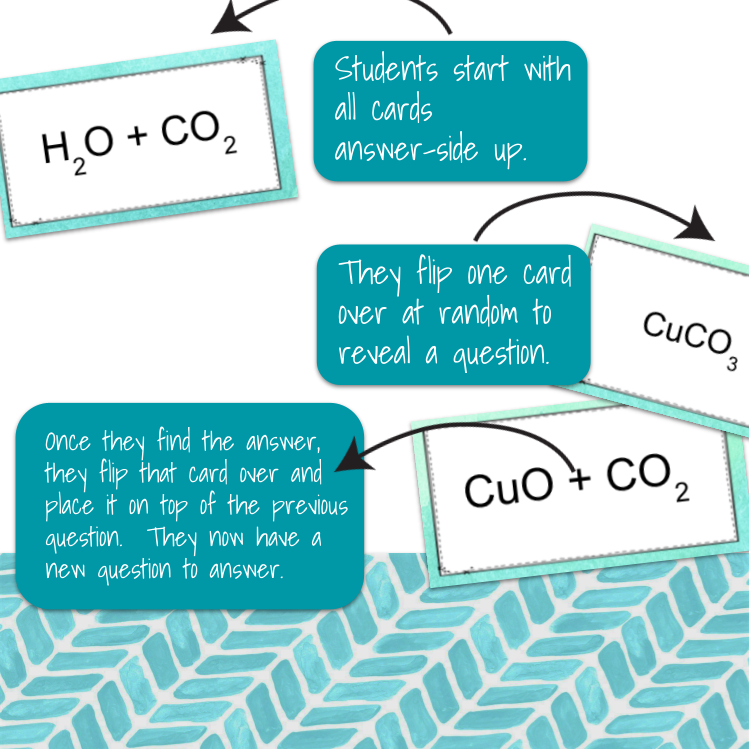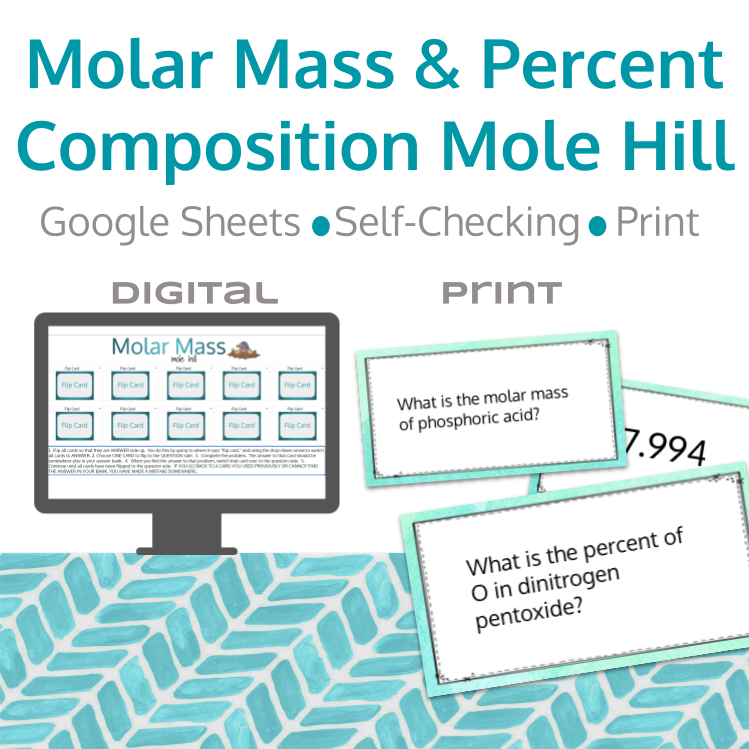 Image 1 of 1
Image 1 of 1


AP Chemistry Mass Spectroscopy Element Identification Mole Hill in Print and Digital Version
Use this mole hill to help students practice identifying elements from mass spectra in an engaging and self-checking activity! Mass spectra are provided for 10 different elements, including one diatomic element. Students will use those spectra to identify the elements.
For the print version, students will begin with all sides flipped to the answer side. Students will choose one card at random to flip to the question side, and then will answer that question. The answer to the first question will be in the answer bank somewhere, and when they find it, they flip that card over to the question side, placing it on top of the previous question. This forms a "mole hill," or question pile/question stack. The activity is very similar to dominos, except the students will stack their work. You will need to print out and cut the cards in enough sets for pairs of students to complete the activity. I also recommend laminating the cards for durability.
For the digital version, the process is very similar, except it is in a Google Sheet. Students will flip cards, but there is no stacking. Both you and your students must have a Google account and access to the internet to use this resource.
This resource includes both a print version, along with the student Google Sheet for the digital version.
Join my email list and get a FREE PNE (protons, neutrons, and electrons) Mole Hill that is not available anywhere else!
Let's connect on Instagram.
Read my blog post about mole hills here.
Use this mole hill to help students practice identifying elements from mass spectra in an engaging and self-checking activity! Mass spectra are provided for 10 different elements, including one diatomic element. Students will use those spectra to identify the elements.
For the print version, students will begin with all sides flipped to the answer side. Students will choose one card at random to flip to the question side, and then will answer that question. The answer to the first question will be in the answer bank somewhere, and when they find it, they flip that card over to the question side, placing it on top of the previous question. This forms a "mole hill," or question pile/question stack. The activity is very similar to dominos, except the students will stack their work. You will need to print out and cut the cards in enough sets for pairs of students to complete the activity. I also recommend laminating the cards for durability.
For the digital version, the process is very similar, except it is in a Google Sheet. Students will flip cards, but there is no stacking. Both you and your students must have a Google account and access to the internet to use this resource.
This resource includes both a print version, along with the student Google Sheet for the digital version.
Join my email list and get a FREE PNE (protons, neutrons, and electrons) Mole Hill that is not available anywhere else!
Let's connect on Instagram.
Read my blog post about mole hills here.



